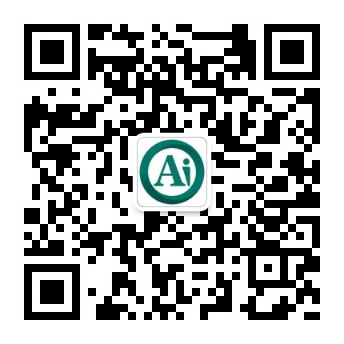Odoo开发教程¶
- 入门教程
- Setup guide
- Server framework 101
- Chapter 1: Architecture Overview
- Chapter 2: A New Application
- Chapter 3: Models And Basic Fields
- Chapter 4: Security - A Brief Introduction
- Chapter 5: Finally, Some UI To Play With
- Chapter 6: Basic Views
- Chapter 7: Relations Between Models
- Chapter 8: Computed Fields And Onchanges
- Chapter 9: Ready For Some Action?
- Chapter 10: Constraints
- Chapter 11: Add The Sprinkles
- Chapter 12: Inheritance
- Chapter 13: Interact With Other Modules
- Chapter 14: A Brief History Of QWeb
- Chapter 15: The final word
- Discover the web framework
- Chapter 1: Owl components
- Example: a
Countercomponent - 1. Displaying a counter
- 2. Extract
Counterin a sub component - 3. A simple
Cardcomponent - 4. Using
markupto display html - 5. Props validation
- 6. The sum of two
Counter - 7. A todo list
- 8. Use dynamic attributes
- 9. Adding a todo
- Theory: Component lifecycle and hooks
- 10. Focusing the input
- 11. Toggling todos
- 12. Deleting todos
- 13. Generic
Cardwith slots - 14. Minimizing card content
- Example: a
- Chapter 2: Build a dashboard
- 1. A new Layout
- Theory: Services
- 2. Add some buttons for quick navigation
- 3. Add a dashboard item
- 4. Call the server, add some statistics
- 5. Cache network calls, create a service
- 6. Display a pie chart
- 7. Real life update
- 8. Lazy loading the dashboard
- 9. Making our dashboard generic
- 10. Making our dashboard extensible
- 11. Add and remove dashboard items
- 12. Going further
- Setup
- Content
- Chapter 1: Owl components
- Master the web framework
- Chapter 1: Build a Clicker game
- 1. Create a systray item
- 2. Count external clicks
- 3. Create a client action
- 4. Move the state to a service
- 5. Use a custom hook
- 6. Humanize the displayed value
- 7. Add a tooltip in
ClickValuecomponent - 8. Buy ClickBots
- 9. Refactor to a class model
- 10. Notify when a milestone is reached
- 11. Add BigBots
- 12. Add a new type of resource: power
- 13. Define some random rewards
- 14. Provide a reward when opening a form view
- 15. Add commands in command palette
- 16. Add yet another resource: trees
- 17. Use a dropdown menu for the systray item
- 18. Use a Notebook component
- 19. Persist the game state
- 20. Introduce state migration system
- 21. Add another type of trees
- Chapter 2: Create a Gallery View
- 1. Make a hello world view
- 2. Use the Layout component
- 3. Parse the arch
- 4. Load some data
- 5. Solve the concurrency problem
- 6. Reorganize code
- 7. Make the view extensible
- 8. Display images
- 9. Switch to form view on click
- 10. Add an optional tooltip
- 11. Add pagination
- 12. Validating views
- 13. Uploading an image
- 14. Advanced tooltip template
- Chapter 3: Customize a kanban view
- Setup
- Content
- Chapter 1: Build a Clicker game
- Define module data
- Restrict access to data
- Safeguard your code with unit tests
- Write importable modules
- Reuse code with mixins
- Build PDF Reports
- Learn the server and web frameworks
- Expand your knowledge on the server framework
- 常见问题指导
- Write lean easy-to-maintain CSS
- Customize a field
- Customize a view type
- Create a client action
- Create a standalone Owl application
- Use Owl components on the portal and website
- Website themes
- Setup
- Theming
- Layout
- Navigation
- Pages
- Media
- Building blocks
- Shapes
- Gradients
- Animations
- Forms
- Translations
- Going live
- Web Services
- Multi-company Guidelines
- Create customized reports
- Accounting localization
- Translating Modules
- Connect with a device
- Upgrade a customized database
- Frontend development
- Server-side development
- Custom development
- 开发手册
- Server framework
- ORM API
- Changelog
- Odoo version 18.0
- Odoo Online version 17.4
- Odoo Online version 17.3
- Odoo Online version 17.2
- Odoo Online version 17.1
- Odoo version 17.0
- Odoo Online version 16.4
- Odoo Online version 16.3
- Odoo Online version 16.2
- Odoo version 16.0
- Odoo Online version 15.4
- Odoo Online version 15.3
- Odoo Online version 15.2
- Models
- Fields
- Recordsets
- Method decorators
- Environment
- Common ORM methods
- Inheritance and extension
- Error management
- Changelog
- Data Files
- Actions
- QWeb Reports
- Module Manifests
- Security in Odoo
- Performance
- Testing Odoo
- Web Controllers
- Mixins and Useful Classes
- ORM API
- Web framework
- Framework Overview
- Assets
- Javascript Modules
- Owl components
- Registries
- Services
- Hooks
- Patching code
- Error handling
- Javascript Reference
- Mobile JavaScript
- QWeb Templates
- Odoo Editor
- User interface
- Standard modules
- Command-line interface (CLI)
- Upgrades
- External API
- Extract API
- Server framework
本开发教程为确保更为精准,将主要使用英文。欢迎来到 Odoo 开发者文档!无论您是经验丰富的开发者还是刚刚入门,这里都有您开发 Odoo 应用所需的所有技术指导和资源。浏览我们丰富的教程、操作指南和参考资料,以实现您的开发目标。
Odoo 的开发生态系统建立在一个模块化和可扩展的架构上,允许您扩展现有应用程序或创建新的应用程序以满足现代企业的特定需求。您可以利用 Odoo 提供的工具和框架,专注于快速启动和运行您的 Web 应用程序,而无需重新发明轮子或担心底层基础设施。
如果您是 Odoo 或 Web 应用开发的新手,请从 Server framework 101 教程开始。
